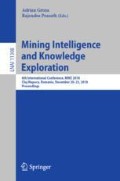Abstract
This paper presents a detailed and robust survey of the state-of-the-art algorithms and techniques for performing skin lesion segmentation. The approach used is the comparative analysis of the existing methods for skin lesion analysis, critical review of the performance evaluation of some recently developed algorithms for skin lesion images segmentation, and the study of current evaluating metrics used for performance analysis. The study highlights merits and demerits of the algorithms examined, observing the strength and weakness of each algorithm. An inference can thus be made from the analysis about the best performing algorithms. It is observed that the advancement of technology and availability of a large and voluminous data set for training the machine learning algorithms encourage the application of machine learning techniques such as deep learning for performing skin lesion images segmentation. This work shows that most deep learning techniques out-perform some existing state-of-the arts algorithm for skin lesion images segmentation.
Access this chapter
Tax calculation will be finalised at checkout
Purchases are for personal use only
References
Celebi, M.E., et al.: A methodological approach to the classification of dermoscopy images. Comput. Med. Imaging Graph. 31(6), 362–373 (2007)
Oliveira, R.B., Filho, M.E., Ma, Z., Papa, J.P., Pereira, A.S., Tavares, J.M.R.S.: Computational methods for the image segmentation of pigmented skin lesions: a review. Comput. Methods Programs Biomed. 131, 127–141 (2016)
Okuboyejo, D.A., Olugbara, O.O.: A review of prevalent methods for automatic skin lesion diagnosis. Open Dermatol. J. 12, 14–53 (2018)
Cavalcanti, P.G., Scharcanski, J.: Macroscopic pigmented skin lesion seg-mentation and its inuence on the lesion classication and diagnosis. In: Celebi, M., Schaefer, G. (eds.) Color Medical Image Analysis. Lecture Notes in Computational Vision and Biomechanics, vol. 6, pp. 15–39. Springer, Dordrecht (2013). https://doi.org/10.1007/978-94-007-5389-1_2
Pathan, S., Prabhu, K.G., Siddalingaswamy, P.C.: Techniques and algorithms for computer aided diagnosis of pigmented skin - a review. Biomed. Signal Process. Control 39, 237–262 (2018)
Revathi, V., Chithra, A.: A review on segmentation techniques in skin lesion images. Int. Res. J. Eng. Technol. (2015). e-ISSN 2395-0056
Hsu, T.-Y., Fuh, C.-S.: Pedestrian Contour Detection Based on Image Segmentation, pp. 1–6 (2010)
Celebi, M.E., Iyatomi, H., Schaefer, G., Stoecker, W.V.: Lesion border detection in dermoscopy images. Comput. Med. Imaging Graph 33(2), 148–153 (2010)
Lin, B.S., Michael, K., Kalra, S., Tizhoosh, H.R.: Skin lesion segmentation: U-Nets versus clustering. In: Proceedings of the IEEE Symposium Series on Computational Intelligence, SSCI 2017, pp. 1–7 (2018)
Alvarez, D., Iglesias, M.: k-Means clustering and ensemble of regressions: an algorithm for the ISIC 2017 skin lesion segmentation challenge. ArXiv preprint arXiv:1702.07333 (2017)
Attia, M., Hossny, M., Nahavandi, S., Yazdabadi, A.: Spatially aware melanoma segmentation using hybrid deep learning techniques. arXiv preprint arXiv:1702.07963 (2017)
Wen, H.: II-FCN for skin lesion analysis towards melanoma detection. In: ISIC 2017. https://arxiv.org/pdf/1702.08699.pdf. Accessed 13 Aug 2018
Jahanifar, M., Tajeddin, N.Z., Asl, B.M.: Supervised saliency map driven segmentation of the lesions in dermoscopic images. https://arxiv.org/ftp/arxiv/papers/1703/1703.00087.pdf. Accessed 13 Aug 2018
Berseth, M.: Skin lesion analysis towards melanoma detection. https://arxiv.org/ftp/arxiv/papers/1703/1703.00523.pdf. Accessed 13 Aug 2018
Chang, H.: Skin cancer reorganization and classification with deep neural network. https://arxiv.org/ftp/arxiv/papers/1703/1703.00534.pdf. Accessed 13 Aug 2018
Ramachandram, D., Devries, T.: LesionSeg: semantic segmentation of skin lesions using deep convolutional neural network. In: ISIC 2017. https://arxiv.org/pdf/1703.03372.pdf. Accessed 13 Aug 2018
Li, Y., Shen, L.: Skin lesion analysis towards melanoma detection using deep learning network. https://arxiv.org/ftp/arxiv/papers/1703/1703.00534.pdf. Accessed 13 Aug 2018
Galdran, A., Alvarez, A.: Data-driven color augmentation techniques for deep skin image analysis. https://arxiv.org/pdf/1703.03702.pdf. Accessed 13 Aug 2018
Guarracino, M.R., Maddalena, L.: Segmenting dermoscopic images. https://arxiv.org/pdf/1703.03186.pdf. Accessed 13 Aug 2018
Garcia-Arroyo, J.L., Garcia-Zapirain, B.: Segmentation of skin lesions based on fuzzy classification of pixels and histogram thresholding. https://arxiv.org/pdf/1703.03888.pdf. Accessed 13 Aug 2018
Yuan, Y.: Automatic skin lesion segmentation with fully convolutional-deconvolutional networks. https://arxiv.org/pdf/1703.05165.pdf. Accessed 13 Aug 2018
Bi, L., Kim, J., Ahn, E., Feng, D.: Automatic skin lesion analysis using large-scale dermoscopy images and deep residual networks. https://arxiv.org/ftp/arxiv/papers/1703/1703.04197.pdf. Accessed 13 Aug 2018
Menegola, A., Tavares, J., Fornaciali, M., Li, L.T., Avila, S., Valle, E.: RECOD Titans at ISIC challenge 2017. https://arxiv.org/pdf/1703.04819.pdf. Accessed 13 Aug 2018
Qi, J., Le, M., Li, C., Zhou, P.: Global and local information based deep network for skin lesion segmentation. https://arxiv.org/pdf/1703.05467.pdf. Accessed 13 Aug 2018
Jaisakthi, S.M., Chandrabose, A., Mirunalini, P.: Automatic skin lesion segmentation using semi-supervised learning technique. https://arxiv.org/pdf/1703.04301.pdf. Accessed 13 Aug 2018
Wiselin Jiji, G., Johnson Durai Raj, P.: An extensive technique to detect and analyze melanoma. https://arxiv.org/ftp/arxiv/papers/1702/1702.08717.pdf. Accessed 13 Aug 2018
Kawahara, J., Hamarneh, G.: Fully convolutional networks to detect clinical dermoscopic features. https://arxiv.org/pdf/1703.04559.pdf. Accessed 13 Aug 2018
Gutiérrez-Arriola, J.M., Gómez-Álvarez, M., Osma-Ruiz, V., Sáenz-Lechón, N., Fraile, R.: Skin lesion segmentation based on preprocessing, thresholding and neural networks. https://arxiv.org/ftp/arxiv/papers/1703/1703.04845.pdf. Accessed 13 Aug 2018
Andre, E., et al.: Dermatologist-level classification of skin cancer with deep neural networks. Nature 542(7639), 115 (2017)
Author information
Authors and Affiliations
Corresponding author
Editor information
Editors and Affiliations
Rights and permissions
Copyright information
© 2018 Springer Nature Switzerland AG
About this paper
Cite this paper
Adeyinka, A.A., Viriri, S. (2018). Skin Lesion Images Segmentation: A Survey of the State-of-the-Art. In: Groza, A., Prasath, R. (eds) Mining Intelligence and Knowledge Exploration. MIKE 2018. Lecture Notes in Computer Science(), vol 11308. Springer, Cham. https://doi.org/10.1007/978-3-030-05918-7_29
Download citation
DOI: https://doi.org/10.1007/978-3-030-05918-7_29
Published:
Publisher Name: Springer, Cham
Print ISBN: 978-3-030-05917-0
Online ISBN: 978-3-030-05918-7
eBook Packages: Computer ScienceComputer Science (R0)

